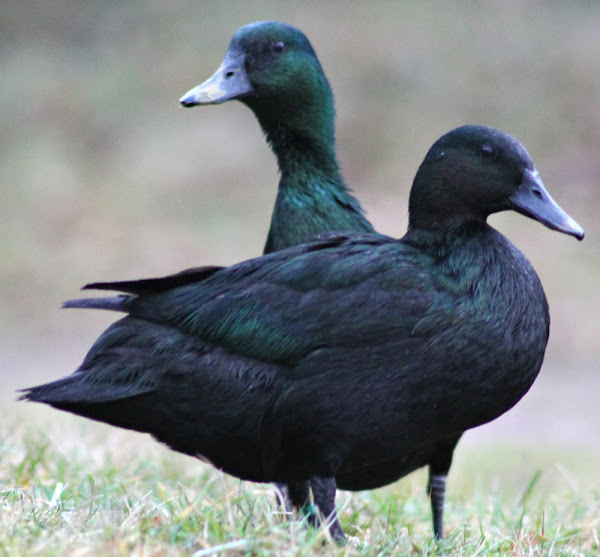Black East Indian Duck

Scientific Name
Anas platyrhynchos domesticus (domestic breed)
Alternative Names
Black East Indian, East Indie Duck, Black Indie
Measurements
| Feature | Male | Female |
|---|---|---|
| Length | Around 50 cm (20 in) | Around 45 cm (18 in) |
| Weight | Up to 1 kg (2.2 lb) | Slightly less than 1 kg (2.2 lb) |
| Wingspan | Not recorded | Not recorded |
Status
The East Indie, also called the Black East Indian, is an ornamental bantam duck believed to have originated in the United States. It is the oldest known bantam duck breed, kept mainly for decoration and shows rather than farming.
Identification
A small, elegant duck with glossy greenish-black plumage that shines with an iridescent sheen in sunlight. The bill, legs, and feet are also black. Older birds may develop a few white feathers with age. It is quieter and more reserved than the lively Call Duck, and capable of short, strong flights unless its wings are clipped.
Voice
Soft and quiet compared to other ornamental ducks. Males give low, raspy calls; females produce gentle quacks.
Diet
Eats a variety of small insects, plants, and seeds. When kept in gardens, it helps control pests like snails and insects.
Distribution
First bred and developed in the United States, the East Indie was later imported to Britain before 1831. It is now kept worldwide by hobbyists and breeders.
Habitat
Prefers calm ponds, gardens, and small enclosures. Being a domestic breed, it relies on human care but enjoys access to clean water and grassy areas for foraging.
Breeding
East Indies are seasonal layers that produce small clutches of 5–8 eggs. The eggs are grey to black in color. They make good mothers but can be shy during nesting. Ducks that develop white feathers should not be used for breeding.
Wintering
As a domestic breed, East Indies are non-migratory and can tolerate mild winters if provided with shelter and unfrozen water.
Use
Primarily kept for exhibition and ornamental purposes. Some owners also use them in garden pest control thanks to their gentle grazing habits and fondness for insects.
Conservation
Not considered at risk. Maintained by duck enthusiasts and poultry clubs through selective breeding.
